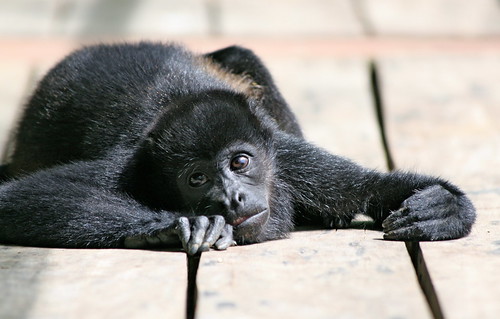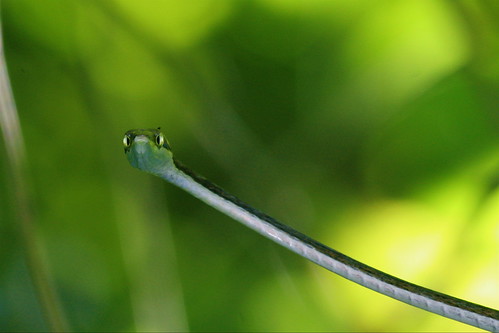
This is Duke. He is a mantled howler monkey living in Costa Rica. He was found abandoned on the forest floor as a baby and brought a local animal sanctuary. He is a perfectly healthy male, so why did the staff at the sanctuary hypothesize he was abandoned? You can't see it in the picture, but he has white patches of fur on this tail. The staff suggested this difference might be enough to make his mother reject him.
Living around three species of monkeys for a week was quite an experience. I had always thought them interesting, but I had not thought much about them beyond that. In observing them, it became clear to me that there are so many traits that I thought to be human that are distributed more greatly in the evolution of primates. Their ability to learn and reason, to predict. Even the expressiveness of their faces surprised me. Sadly we saw evidence of their response to abuse which seemed "human", and happily their ability to recover.
One of the many episodes I remember that demonstrated just how smart they are occurred in our last few moments at the facility. We were paying our bills and had put out some money as a gratuity for the staff. One of the spider monkeys saw the money grabbed it and reveled in the commotion it caused. She only ate a portion of the bills. After it had settled down and the money was recovered, my wife tucked the money away in what she thought to be a safe place, inside the pocket of a folder. Well, the monkey had been playing non-chalant but keenly observing. When we moved from the table, she sprinted across the yard, jumped to the table, opened the folder, and the entire scene replayed itself. Monkeys are, unsurprisingly, human-like.
Returning to Duke, it is interesting that that difference may have such terrible consequences in monkey society, and sadly it something apparently shared with humans. But as my friend Jeff often says, while we are products of evolution, one trait we have is our ability to transcend our evolutionary past, if we try. I have seen our ability to move beyond what once might have been adaptive. I hope we can do it more often. I wonder whether that ability is more broadly distributed in the evolutionary past?
And, Duke? He apparently got over his rough start in life and is leading his own troupe of "misfit" howlers.






